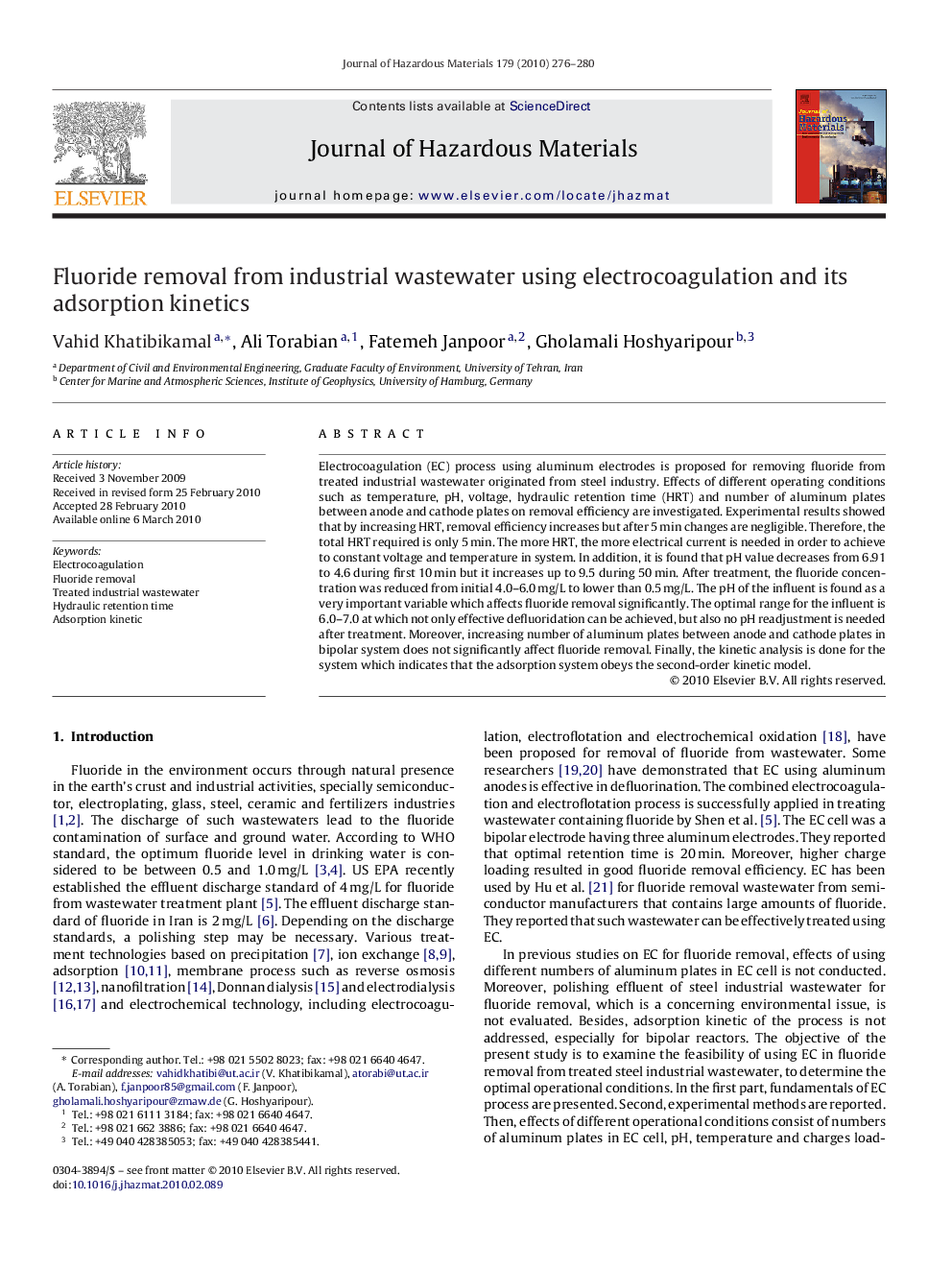| Article ID | Journal | Published Year | Pages | File Type |
|---|---|---|---|---|
| 580365 | Journal of Hazardous Materials | 2010 | 5 Pages |
Abstract
Electrocoagulation (EC) process using aluminum electrodes is proposed for removing fluoride from treated industrial wastewater originated from steel industry. Effects of different operating conditions such as temperature, pH, voltage, hydraulic retention time (HRT) and number of aluminum plates between anode and cathode plates on removal efficiency are investigated. Experimental results showed that by increasing HRT, removal efficiency increases but after 5Â min changes are negligible. Therefore, the total HRT required is only 5Â min. The more HRT, the more electrical current is needed in order to achieve to constant voltage and temperature in system. In addition, it is found that pH value decreases from 6.91 to 4.6 during first 10Â min but it increases up to 9.5 during 50Â min. After treatment, the fluoride concentration was reduced from initial 4.0-6.0Â mg/L to lower than 0.5Â mg/L. The pH of the influent is found as a very important variable which affects fluoride removal significantly. The optimal range for the influent is 6.0-7.0 at which not only effective defluoridation can be achieved, but also no pH readjustment is needed after treatment. Moreover, increasing number of aluminum plates between anode and cathode plates in bipolar system does not significantly affect fluoride removal. Finally, the kinetic analysis is done for the system which indicates that the adsorption system obeys the second-order kinetic model.
Related Topics
Physical Sciences and Engineering
Chemical Engineering
Chemical Health and Safety
Authors
Vahid Khatibikamal, Ali Torabian, Fatemeh Janpoor, Gholamali Hoshyaripour,
